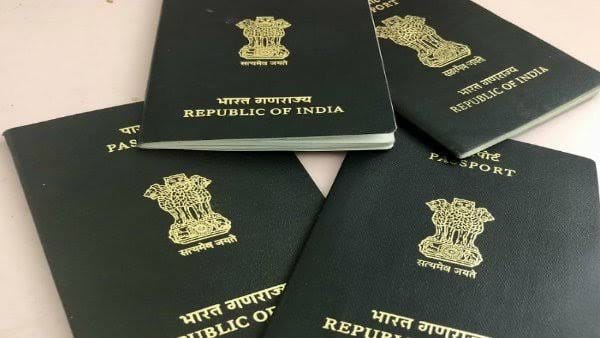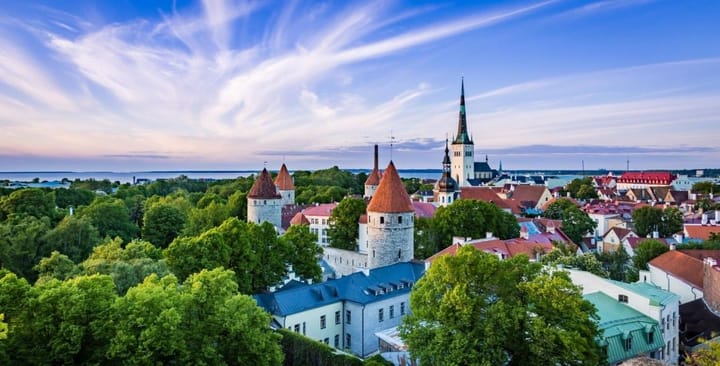A Traveller's Perfect Guide to Iceland
A perfect guide for a Solo Female Traveler to plan a trip to Iceland. Know the best and most popular places to visit in Iceland in 6 days.

Get to know the things to do in Iceland while you are there!
Iceland is the perfect destination for a seasoned traveler, a first-time Iceland solo traveler, or an adventurous family looking to road trip around the island. With friendly locals, stunning scenery, tons of adventure, and a lively tourism scene, you should experience Iceland at least once in your lifetime. In this blog you will learn about the best places to visit in Iceland and other interesting things to do in Iceland.
One of the most special things about Iceland is its nature. It´s magnificent. Iceland has everything from volcanoes to geysers. Icelandic nature is so diverse and beautiful that it has inspired and influenced people for years. Here is a perfect 6 day itinerary if you are planning to go on Iceland trip from India and want to keep the trip in budget.
Contents

6 Day trip to Iceland for a Solo Traveler
The itinerary below is apt for a shoulder season tour and covers the south coastline of Iceland. You may alter the route and number of days as per your interests to plan your Iceland tour from India.
- Day 1| Arrive at Reykjavik- From the Airport, proceed to the Blue Lagoon before checking in to the Hotel.
- Day 2| Reykjavik Sightseeing- You can visit Perlan, National Museum, Settlement Exhibition, Hallgrímskirkja Church , Althingi, and Tjörnin-Austurvöllur
- Day 3| Reykjavik to Vik- Enroute you may visit Seljalandsfoss waterfall, Reynisfjara black sand beach, Skógarfoss and Gljúfrafoss waterfall.
- Day 4| Vik to Vatnajokull National Park- Enroute you may Fjadrargljufur Canyon, Jokulsarlon glacier lagoon and Diamond Beach.
- Day 5| Vatnajokull National Park to Hella- Enroute you may visit Dyrholaey arch portal, Skaftafell National Park and the volcano & earthquake LAVA Centre at Hvolsvollur.
- Day 6| Golden Circle Tour- Start with Gullfoss Falls followed by Geysir and the National Park Thingvellir to complete the entire golden circle tour. Later proceed to the Airport.
If you want to spend more days in Iceland, you may travel further North of the country to Mývatn, Kirkjufell and other places. You can even spend some time chasing the Northern Lights in the evening and late night.

WOW Pro Tip: Make sure to check the weather forecast a day ahead and plan your route accordingly. Do take the warnings seriously as the cross current wind and rain might cause serious damage if ignored.
When to Travel to Iceland
Midnight sun and warmer temperatures make summer the best season to visit Iceland. Although hikers will want to consider July and August as the best time to visit Iceland whereas February, March, September and October are typically the best time to visit Iceland for the Northern Lights. You can refer the table below to consider the best time to travel as per your choices if you are planning the Iceland trip from India.


Best Time to See the Northern Lights: Many people come to Iceland hoping to see the aurora borealis, or northern lights. It’s an ideal place to do so, as the country’s small population and long distances between towns make it easy to escape light pollution, even if you’re in or near Reykjavik. There are a number of conditions required for them to be visible, including guaranteed darkness, which is why the best time to see them is from late September through late March, when there are full dark nights. Another important factor is the weather – cold, clear nights are best for aurora views, because warmer nights often bring precipitation or cloud cover. Solar flares on the sun or solar wind is also required. When all of these conditions are met, you’ll have the best chance to view the colorful dancing lights. As there is less precipitation in October and November along with full dark, chilly nights, these months tend to bring the highest odds for viewing. You can contact us to get more information on Northern Lights Tour packages from India or any part of the world.
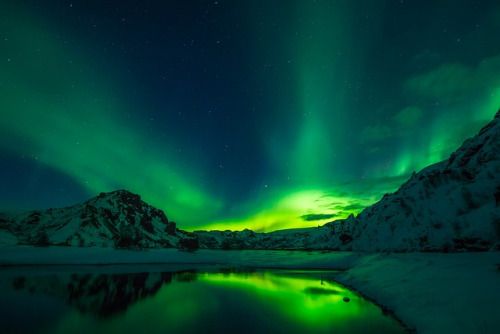
- Best Time for Sightseeing: Iceland is renowned for its numerous spectacular waterfalls, geysers, and volcanoes. In order to see as much as you can, you’ll want to have longer days, fewer crowds to interrupt the view, and weather that doesn’t make roads impassable. That means going in the weeks that frame either end of the high season, around the last week of May through mid-June, or anytime in September.
- Best Time for Whale Watching: Generally, the best time to go whale watching in Iceland is from April to October. The peak season is in the summer months: June, July and August, with tours available from Reykjavik, Vestmannaeyjar islands of the south coast, Husavik Akureyri and Dalvik. You aren’t out of luck if you come during the winter, however. Provided a storm doesn’t blow in, winter whale watching is available from Grundarfjordur on the Snaefellsness Peninsula. In the winter months, watchers are given thermal suits, making it fairly comfortable to see the orca whales that follow the herring in the area waters.
- Best Time for Good Weather: The best time for optimal weather in Iceland is during the high season, particularly July and August when average highs are around 13°C, though temps can reach as high as 15°C or even 20°C. If you’re hoping to avoid the rain, the lowest amount of rainfall occurs in May and June, and temperatures are often a pleasant 11°C. Winter in Iceland is between November and March. These are the darkest months of the year, the shortest day of the year is just before the Christmas holidays, on the 21st of December. On that day there's only daylight for about 4-5 hours.
- Best Time for Visiting Blue Lagoon: The Blue Lagoon is one of Iceland’s most popular attractions all year round, though the biggest crowds tend to be there between May and September, peaking in July and August. This is the best perk if you are on Iceland tours for women. Winter months are typically the calmest, particularly December and January, outside of the holiday period. Tuesdays and Wednesdays are generally the least crowded days of the week, but more important than the day is the time of day you visit. Peak hours are in the morning, from about 10 a.m. to 2 p.m., and lunchtime is generally the busiest time of day overall. By 3 or 4 p.m., the crowds are much smaller, and you will still have plenty of time to enjoy a soak; the lagoon is open until 10 p.m.

- Best Time to Save Money: Airfare and accommodation rates in Iceland are typically cheapest during the winter months, outside of the Christmas and New Year holidays. Prices for everything peak during the busy summer months. If you’re hoping for a combination of lower overall costs and better weather, go during the shoulder season: mid-May through mid-June or September through mid-October.
- Best Time to Avoid Crowds: If you’re hoping for a more relaxed experience without the crowds, avoid going to Iceland in the high season, from mid-June through August. By visiting in April or May, September or October, you will encounter fewer tourists, yet the days will be long enough to enjoy sightseeing and possibly decent weather. The fewest visitors come between November and March, but this is also when inclement weather and short, dark days can affect your plans.
- Puffin Viewing: If you visit Iceland in the summer, you will have the best chance of coming across some puffins during your trip. In mid April time Puffins come over here for nesting and Iceland is the breeding home for about 60 percent of the world's Atlantic puffins. Puffins can be seen in Iceland from early April until September each year.

How Expensive is Iceland?
If in case you are planning to do an Iceland trip from India, it is important to understand the cost of meals, transportation, etc. so that you can financially plan according to that. You can carry plastic money (travel card or credit card) which will be easily acceptable almost everywhere and more preferred than cash currency. Local Currency of Iceland is Icelandic Krona (ISK), however to make it simpler for you the chart below shows the cost of food, transportation and others in Euro and Indian Rupees(INR).
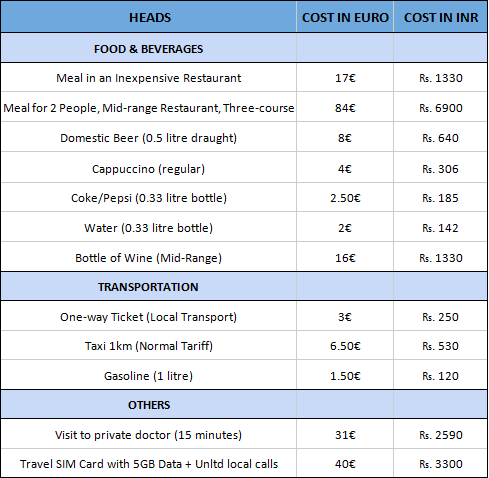
10 FREE things to do in Iceland
Iceland is quickly building a reputation as an expensive place to travel, but that doesn’t mean a trip there has to break the bank. Some of the best things to do in Iceland are free, whether it’s taking a road trip, watching the Northern Lights or exploring Iceland’s unique landscape.
1. Relax in thermal springs. You’ve no doubt seen the pictures of the famous Blue Lagoon, but you can actually skip the fees and find free thermal springs all over the country.
2. Chill out in a free Sculpture Garden. Entry to the Einar Jónsson Museum in Reykjavik is just 600 ISK (about 4€). However, if you don’t want to spring for the entry fee, there’s a free sculpture garden in the back. The garden is full of bronze casts of the work of Iceland’s first sculptor.
3. Catch a glimpse of the Northern Lights. If you’re planning a trip to Iceland, then you’ve definitely seen the ads for the Northern Lights tours. Why spend all that money though when you can see the sky for free? Head down to the Grótta lighthouse on the Seltjarnarnes Peninsula in Reykjavik for your best shot at seeing the Northern Lights for free.
4. Drinking Water: Another thing that is free in Iceland is the Drinking water. Tap Water is really tasty. So don't forget to pack your reusable water bottle and refill it from public taps, faucets and even restaurants- almost all of them won't charge you.
5. Snap a few pics at Reynisfjara Black Sand Beach. Spend some time with your camera at this iconic black sand beach found on the South Coast of Iceland. The beach is known for its rock formations of basalt and is considered to be one of Iceland’s most beautiful black sand beaches.

5. Hike. Iceland has many beautiful trails, hills and mountains, so it’s a great place for hiking! For example, try hiking to Glymur waterfall, Iceland’s second tallest waterfall—just be sure to bring a waterproof jacket.
6. Go to the beach. Nautholsvík Beach is one of the most popular spots in Reykjavík because it is one of the few beaches in Iceland where the water is warm enough for swimming without protective gear. Mixed with warm water, the ocean temperature usually reaches between 64° – 68°C. Also, the beach is serviced and offers great opportunities for sunbathing, swimming, volleyball and sea sports. There is no admission fee, but its opening hours vary seasonally.
7. Take a free walking tour of Reykjavik. One of the best ways to start a trip to a new city is to take a walking tour. You will get to see the main sights, learn some history, and acclimatise to the culture. Plus, you have a local expert who you can ask questions to, which is an invaluable resource in and of itself! You may check out City Walk or Free Walking Tours. Please don't forget to tip the guides.
8. Explore Reykjavik’s Botanical Gardens. There’s a beautiful botanical garden with over 5,000 plant species in Reykjavik. Each of the plants is labelled with its Icelandic and Latin species name. In the summer months you can grab a light Scandanavian dish made from vegetables grown in the garden from the coffee house and cafe in the Garden’s Gazebo.

9. Visit the Grotta Lighthouse. Take a long, scenic walk from Reykjavik city center along the coast to the Grotta Lighthouse, where you can bird watch and take in a view of the Atlantic Ocean. If you’re visiting in the winter, this could be a great place to catch a free view of the Northern Lights.
10. See the Sun Voyager. Snap that perfect insta shot at the iconic Sun Voyager. This sculpture is a tribute to the sun and represents discovering uncharted territory, progress and freedom.
What to Pack for a trip to Iceland?
Here’s a sample packing list of items you should bring with you regardless of the time of year you’re travelling:
- Fleece jacket/lightweight wool sweater
- Rainproof/windproof jacket
- Rain pants
- Sturdy walking shoes with a good tread/grip
- Gloves
- Scarves
- Hat (toque/beanie)
- Swimsuit
- Thermal underwear (specifically for highland travel/activities)
- Waterproof hiking boots (specifically for highland travel/activities)
- Warm socks (specifically for winter and highland travel/activities)
- Quick-dry towel (for visiting pools and hot springs - towels are available for rent at swimming facilities)
Summer Packing Tips
Some visitors find it difficult to sleep with the light of the midnight sun, so eye shades may be helpful. It is also recommended to bring sunglasses and sunscreen. There are few insects in Iceland, but small midges do thrive in the summertime, especially by lakes and streams.
Those spending time in the Lake Mývatn area during summertime may also wish to bring insect repellent or fly masks or nets (especially useful for horse riding).
Winter Packing Tips
Temperatures do not often drop below freezing during Icelandic winter, but an insulated jacket is recommended due to the cool northerly winds. See the Weather guide for average temperatures before starting to pack.
And as sidewalks can get icy and slippery, you may want to bring ice cleats, ice grips or anti-slip soles to give your shoes better traction. These can also be purchased in Iceland at various shops, like outdoor clothing stores.
Forgot Something?
Don't worry. Several apparel stores and second-hand thrift shops can be found in downtown Reykjavík. Among them is Flying Tiger, a budget variety store with inexpensive accessories like sunglasses, gloves, ear plugs, batteries and more.
For inexpensive swimsuits, socks or undergarments, there is an H&M store at Austurbakki 2 in downtown Reykjavik with men's, women's and children's clothing. The Kringlan shopping mall, located just a few kilometres from the city centre, also has numerous international high street brands.
10 interesting Facts About Iceland
From the country’s magnificent glaciers, thundering waterfalls and epic natural nighttime displays, it’s easy to see why travellers are escaping to the edge of the world. There are many characteristics that make this country so unique, but these 10 strange and interesting facts about Iceland may surprise you.
- Iceland was the last place on earth to be settled by humans- Save the best for last? Iceland is known as one of the youngest landmasses on the planet and was one of the last places on earth to be settled by humans. Surprisingly, over 1,100 years ago Vikings from Norway discovered Iceland by accident.
- Many Icelanders believe in elves and trolls- The belief in elves, trolls and other mystical creatures traces back to the Viking age. The stories are plentiful so be sure to set some time aside to speak to an Icelander to hear a tale or two.
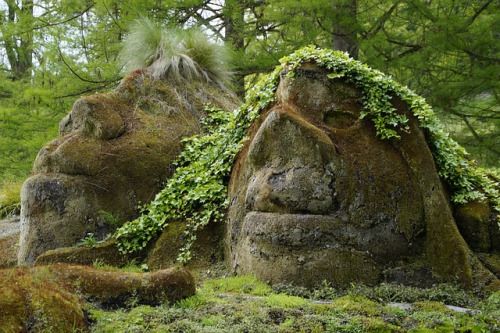
3. More than 60% of the Icelandic population live in the capital city, Reykjavik- Although very small, Reykjavik is the most northern capital city in the world and is home to more than half of the Icelandic population. This colourful and quirky city is packed with numerous restaurants, cafes, bars and museums and is extremely walkable, making it a perfect destination to explore by foot.
4. You can swim outdoors in hot springs all year round- An Icelandic experience is not complete without a dip in a hot spring! Hot springs can be found all around the country and come in all sizes and shapes. Be sure to keep your eyes peeled and your bathing suit in close reach. You don’t want to miss this experience!
5. Beer was banned in Iceland until 1989- Iceland went through a prohibition of beer which began in 1915 and ended in 1989 after a referendum vote by the population. Now, every March 1st, the country celebrates “Bjórdagurinn” or “Beer Day” commemorating the end of a 74-year beer ban.
6. About 11% of Iceland is covered by glaciers- Studies show that 11% of the country of Iceland is covered by glaciers! Glaciers are one of the main attractions in Iceland, and to-date there are almost 269 named. Iceland is also home to Europe’s largest glacier, Vatnajökull, which is equivalent to three times the size of Luxembourg or Rhode Island!

7. One in 10 Icelanders will publish a book- As facts about Iceland go, this one’s pretty awesome. The tradition of reading in Iceland dates back to the 13th century and with one out of ten Icelanders publishing a book in their lifetime, it is clear Iceland is a very literary-focused country!
8. The Icelandic horse is the only horse breed in Iceland- The Icelandic horse has played a very important part in Iceland’s history. They are believed to be one of the purest breeds in the world and are known for their muscular bodies and their ability to grow long hair in the winter and shorter hair in the summer.
WOW Pro Tip: You can indulge into Horse riding tours which are the perfect way to explore Iceland’s rugged terrain. Adventure over lava fields, volcanic landscapes, hills, and explore hot springs in the Icelandic countryside.
9. Iceland has the highest Gender Equality Index- Women in Iceland generally enjoy good gender equality. As of 2018, 88% of working-age women are employed, 65% of students attending university are female, and 41% of members of parliament are women.
10. Iceland has 13 Santas (kind of)- While most of the children of the western world can’t wait for Christmas Day to see if Santa brought them a lovely gift, in Iceland, children get visited by the 13 Yule Lads!
WOW Pro Tip: About 40 kms Southwest of Reykjavík near the village of Selfoss, Iceland, lie the remains of Robert James Fischer, better known to the world as Bobby Fischer. The simple gravesite is found next to the Lutheran Church in Laugardælir along an unmarked road.
10 Must See Places in Iceland
Here is a lay down of few of the best places which should definitely be in your travel itinerary when travelling to Iceland.
- Blue Lagoon is a geothermal pool, spa and Hotel situated over an active lava field in Grindavik, on the Reykjanes Peninsula on the southwest of Iceland.

2. Thingvellir National Park is the first part of the Golden Circle Tour. The park lies in a rift valley that marks the crest of the Mid-Atlantic Ridge and the boundary between the North American and Eurasian tectonic plates.
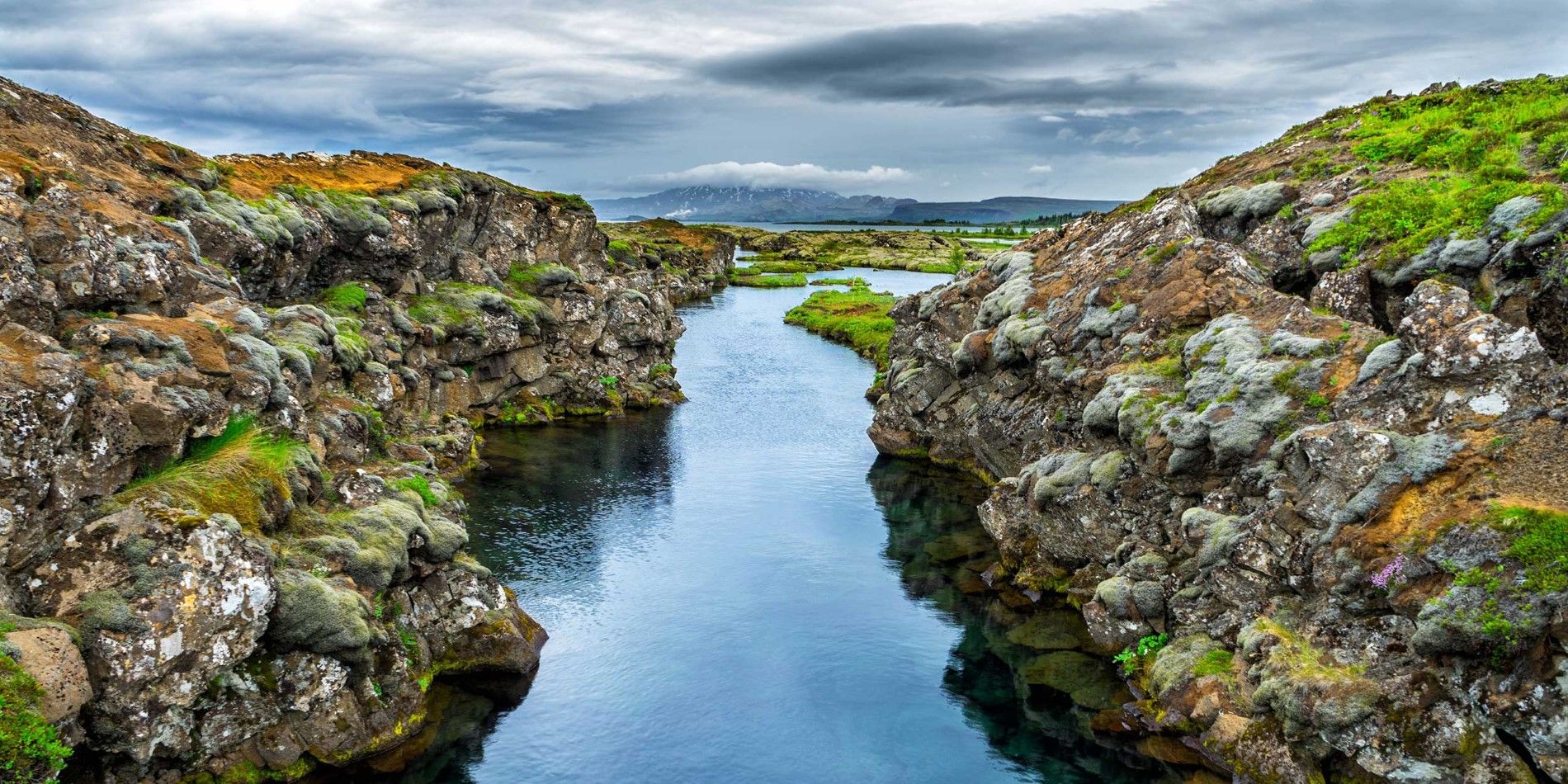
3. Geysir is the second part of the Golden Circle Tour. Eruptions at Geysir can hurl boiling water up to 70 metres in the air. However, eruptions may be infrequent, and have in the past stopped altogether for years at a time

4. Gullfoss Falls is located in the canyon of the Hvítá river in southwest Iceland. This is the third part of the Golden Circle Tour. If you are lucky you might sight a rainbow as well.

5. Jökulsárlón is a large glacial lake in southeast Iceland, on the edge of Vatnajökull National Park. The lake has grown since then at varying rates because of melting of the glaciers.

6. Diamond Beach is a a black volcanic sand beach next to Jökulsárlón Glacier Lagoon on the South Coast of Iceland. You will be mermerized to see the huge blocks of ice calve from the glacier and large chunks of iceberg float in to the Ocean.

7. Seljalandsfoss- The waterfall drops 60 m and is part of the Seljalands River that has its origin in the volcano glacier Eyjafjallajökull. You can walk behind the falls into a small cave.

8. Skógafoss is a waterfall situated on the Skógá River in the south of Iceland at the cliffs of the former coastline.
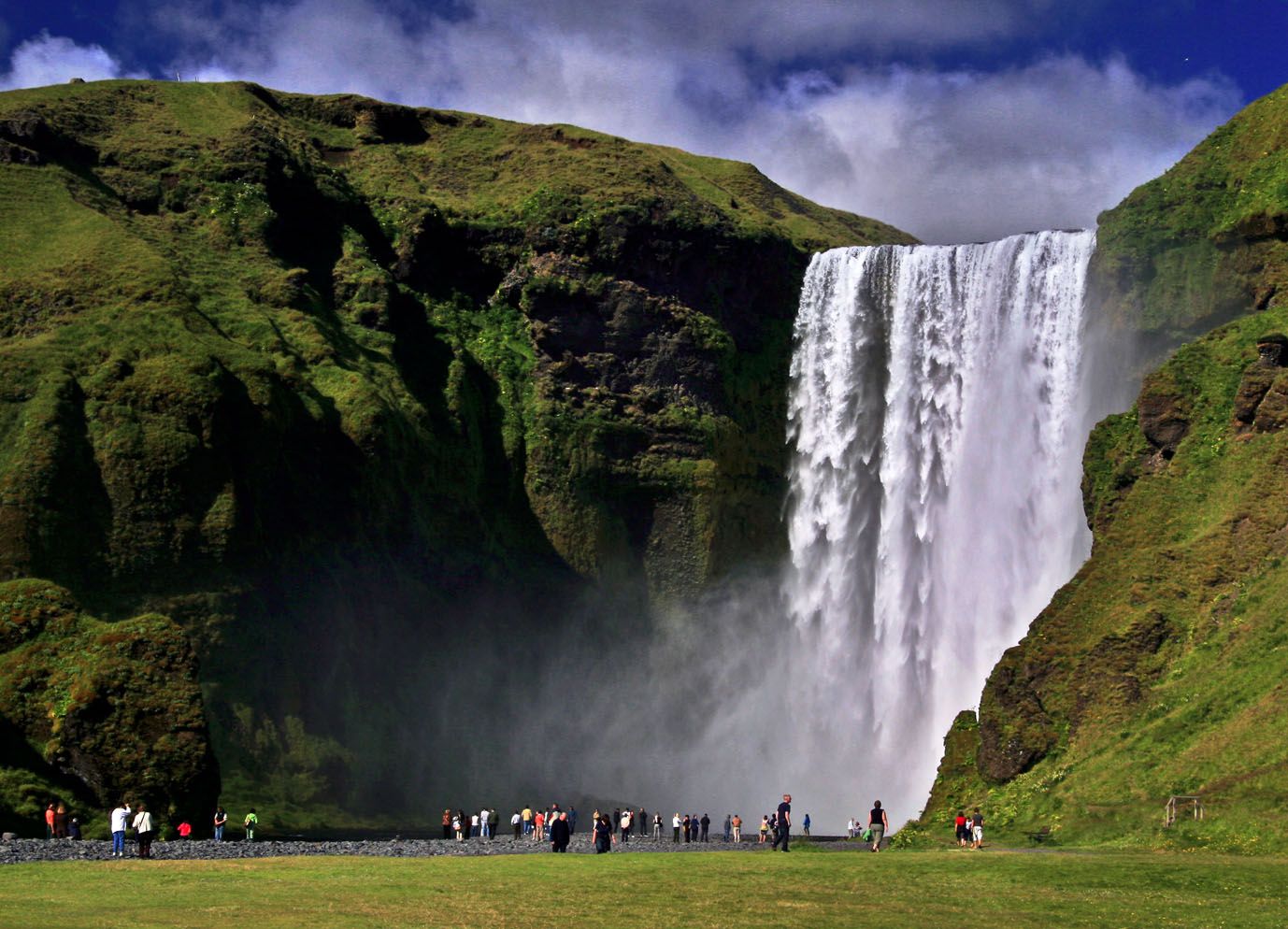
9. Hallgrimskirkja- This is a Lutheran parish church in Reykjavík, Iceland. At 74.5 metres high, it is the largest church in Iceland and among the tallest structures in the country.
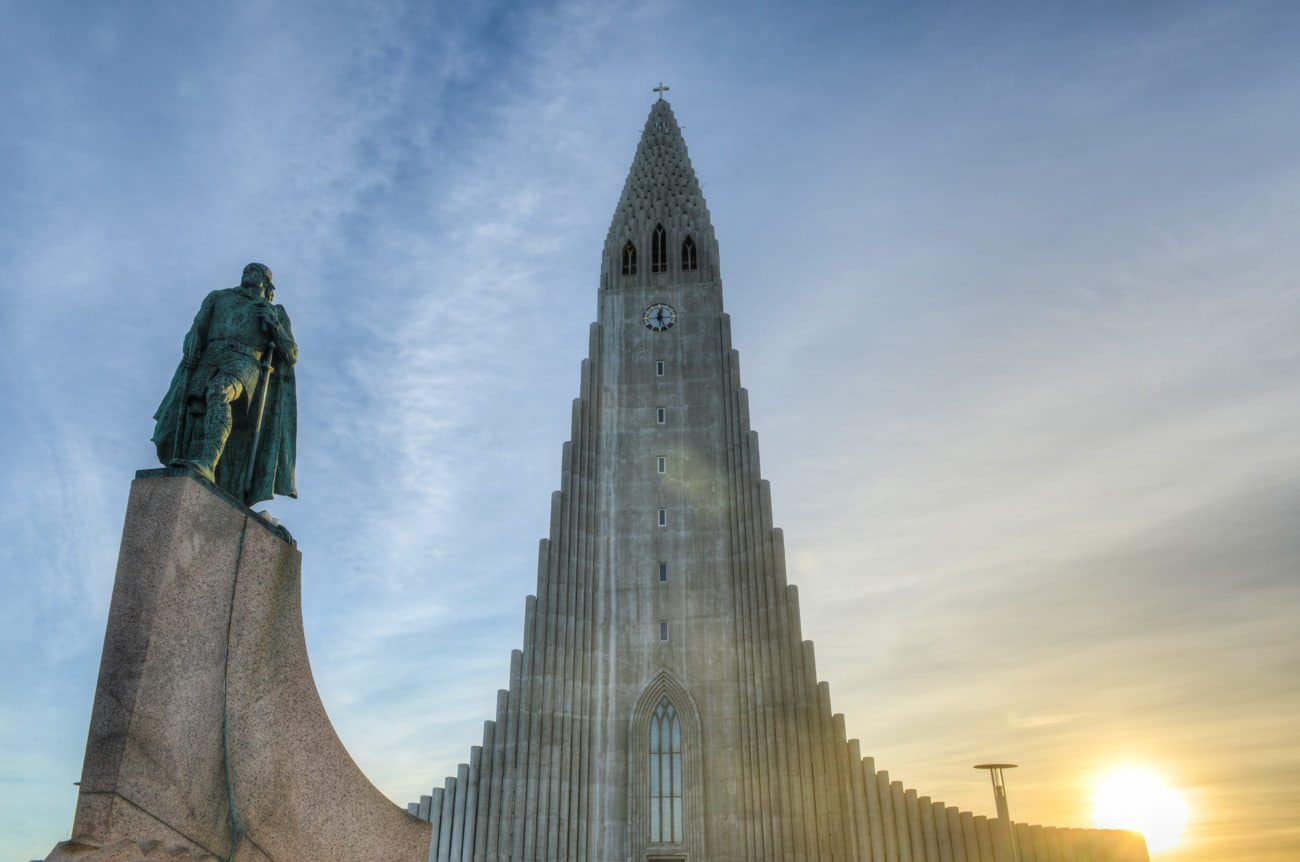
10. Reynisfjara- With its enormous basalt stacks, roaring Atlantic waves and stunning panoramas, Reynisfjara is widely considered to be the most beautiful example of Iceland's black sand beaches. In 1991, National Geographic voted Reynisfjara as one of the Top 10 non-tropical beaches to visit on the planet.

We can plan a perfect Icelandic holiday for you even an Iceland Solo Travel trip. Please click here to know more about Iceland tours from India or Iceland tours for women. You may also join our upcoming exclusive WOW Iceland tours for women here. It is always a great idea to spend a few more days before or after a WOW trip to get to know the country thoroughly.
Also read:
Planning a solo trip to Iceland?
All about Iceland in the month of August
What is Iceland like in the month of September?


